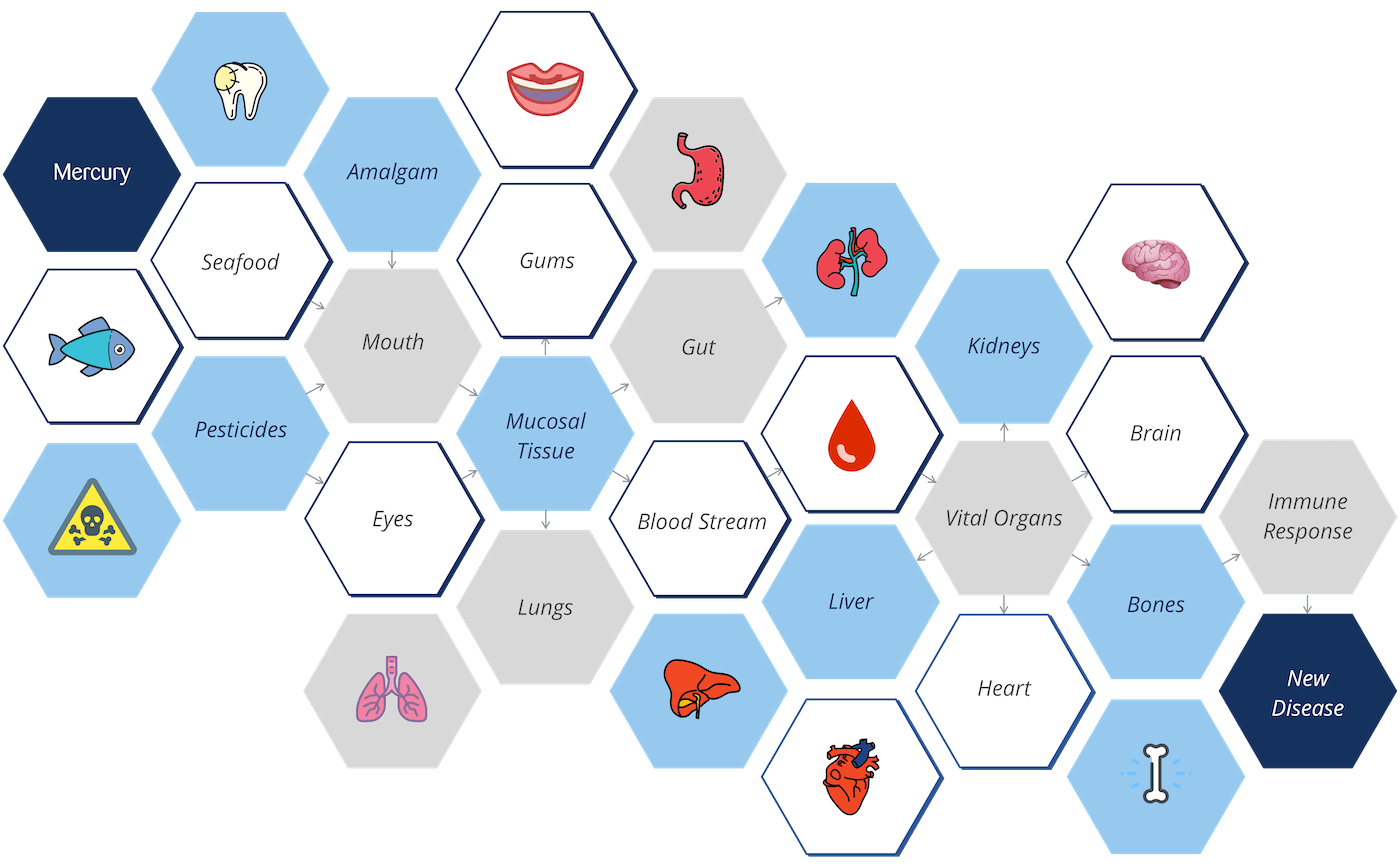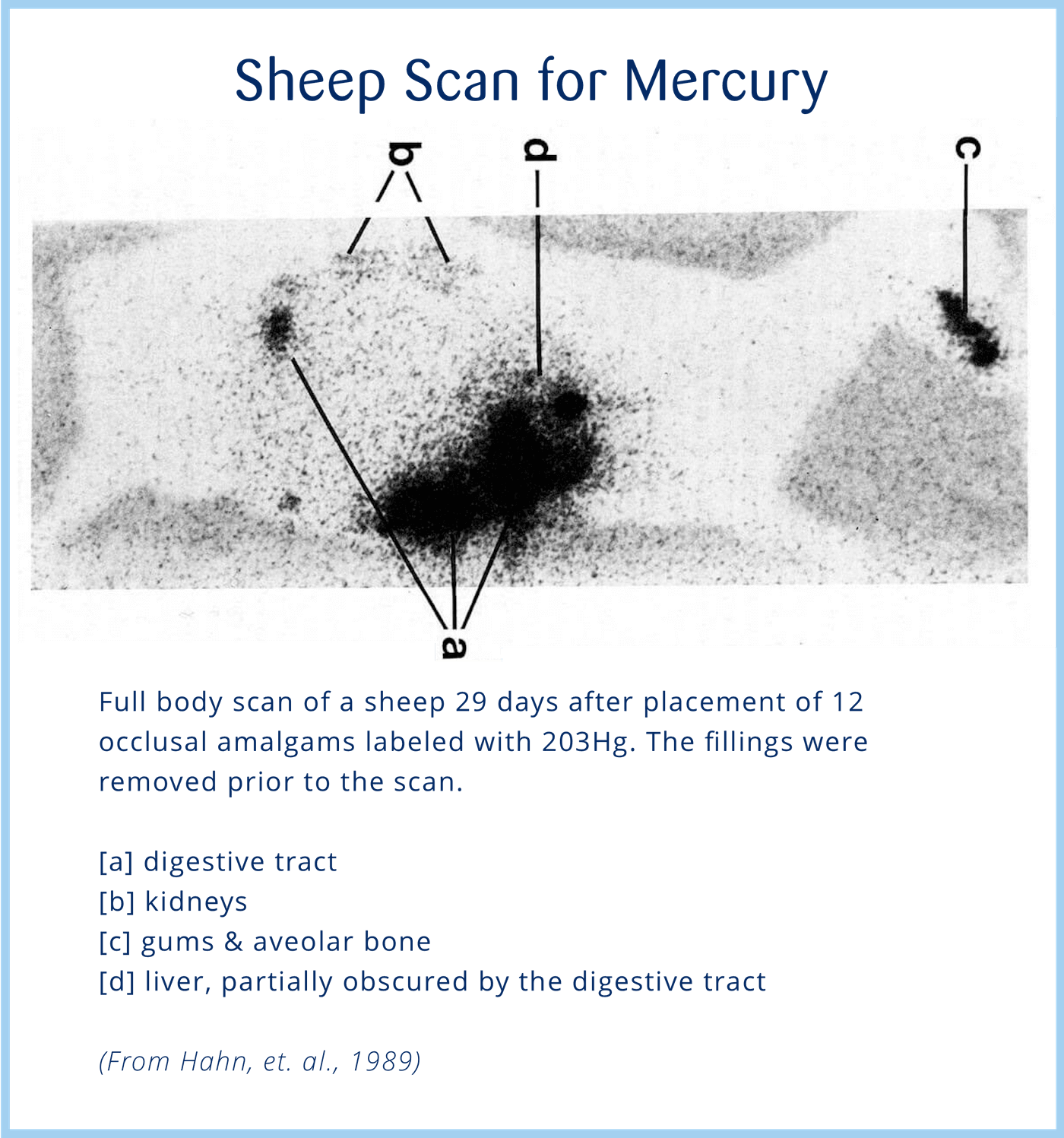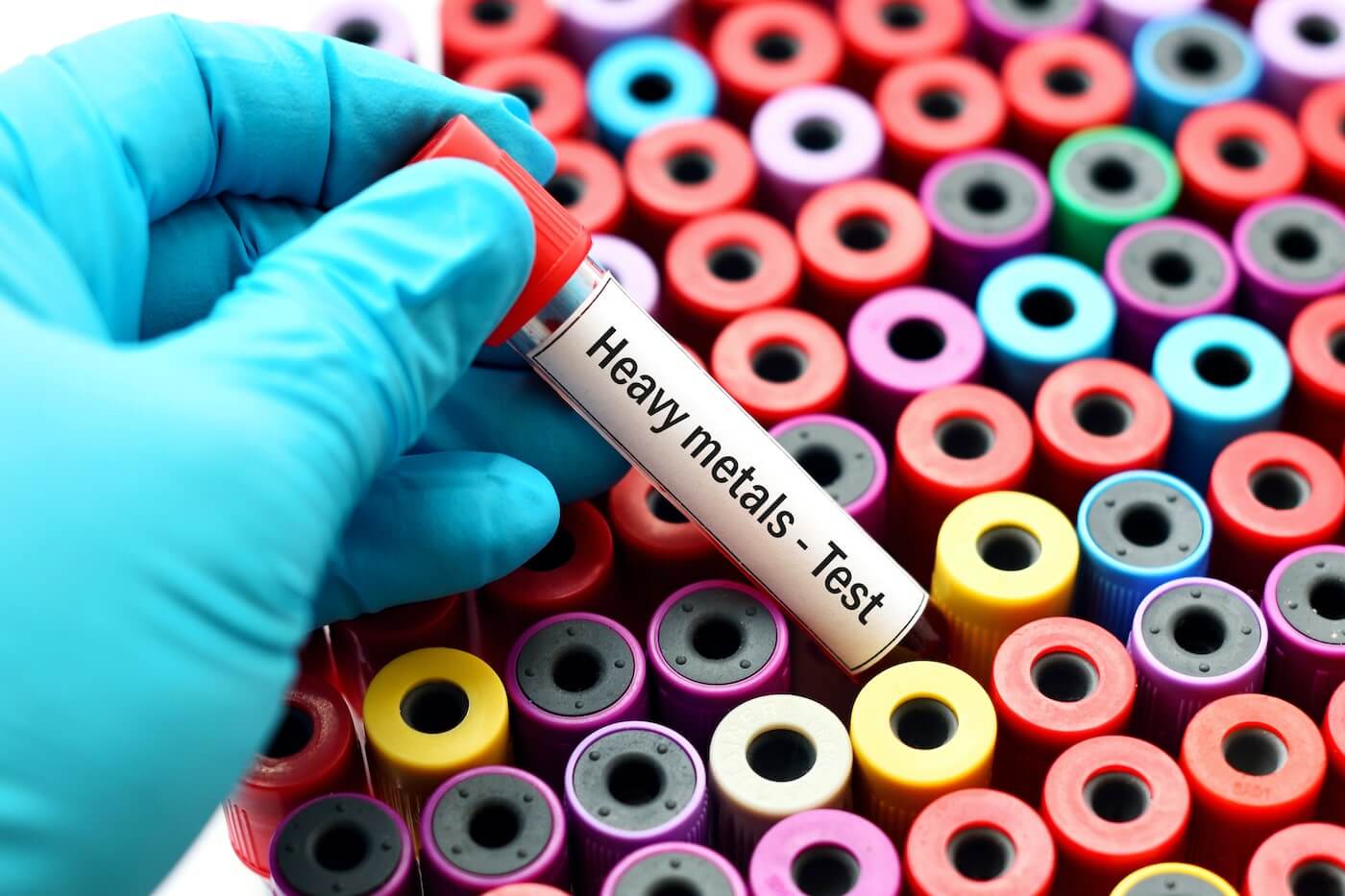Amalgam Fillings and the Side Effects of Amalgam Removal
Amalgam Fillings: What are They and What's in Them?
Amalgam fillings are made from a mixture of mercury, silver, copper and tin. Mercury - the third most toxic substance known to humans -
accounts for about 50% of the total metals in amalgam fillings. The issue with mercury is that it has a unique ability to change form
between liquid, solid and vapour, and it leaks out of amalgam fillings. This happens because the friction of chewing and teeth grinding and
drinking hot liquids erodes the integrity of the amalgam fillings and releases mercury.
Once released from the amalgam, mercury is absorbed by mucosal tissue - like the gums, lungs and gut. Once absorbed by mucosal tissue, it makes its way into the bloodstream - travelling to vital organs like the kidneys, liver, brain and heart. It can also make its way into the bones. Anywhere the blood goes, mercury can go. Mercury poisoning is associated with over 250 symptoms - the most common of which are fatigue, depression and kidney dysfunction. However, many more serious conditions can arise too. And herein lies the danger of amalgam fillings. The diagram below shows how mercury from amalgam fillings can catalyse a secondary immune response and create new diseases and conditions.

Amalgam Fillings Removal
Due to the risks associated with mercury poisoning, amalgam fillings removal has become increasingly popular, with many dentists around the world now offering this service. Whilst the removal of amalgam fillings is certainly important in alleviating systemic health risks, it is the easy part of the job. The removal of amalgam fillings merely cuts off the mercury supply - meaning it only reduces further exposure. However, it does nothing towards removing the mercury that has accumulated in the body after years of exposure. This is the part of amalgam fillings removal that so many people and dentists fail to deal with. It is why people who simply have their amalgam fillings removed continue to suffer the effects of mercury poisoning and fail to make a full recovery.
A 1989 study conducted on sheep and monkeys showed that even 29 days after the animals had amalgam fillings removed, their bodies were still burdened by mercury poisoning. You can see this in the graphics below. The same is true for humans - mercury is still stored in the brain, liver, kidney and bone even after amalgam removal.

The Side Effects of Removing Amalgam Fillings
What's more, removing amalgam fillings presents risks and challenges of its own. If amalgam removal is not done correctly, it can result in
several side effects that wreak havoc on health. Some of the side effects of removing amalgam fillings incorrectly include:
- Increased exposure to mercury poisoning
- Upset nervous system
- Upset immune system
- Mercury tattoos
- Burning mouth
- Creation of new diseases due to secondary immune response
Safe Removal of Amalgam Fillings
To alleviate the risks of side effects, safe removal of amalgam fillings is required. It is important to note that not all dentists remove
amalgam fillings in the same way. In fact, many dentists lack the requisite knowledge to safely remove amalgam fillings and end up doing it
the wrong way. This exposes their patients to the aforementioned side effects and health risks. It's what we call doing the right thing the
wrong way. This is because safe removal of amalgam fillings is more complex than you may imagine - it is not a matter of simply removing
amalgam fillings. To understand how to remove amalgam fillings safely, you must first consider the following.
Sequential Removal of Amalgam Fillings Based on Charge
Amalgam fillings mix with saliva to emit an electric charge - kind of like a battery, only the battery is leaking into the mouth. One of the keys to the safe removal of amalgam fillings is to assess the electrical charge of each quadrant of the mouth before removal. Amalgams should then be removed in order from the most negatively charged to the most positively charged quadrant. This sequential removal method is based on our mentor, Dr Hal Huggins, who discovered that the electrical charges of amalgam fillings stimulate the sympathetic or parasympathetic branch of the nervous system.
The sympathetic nervous system stimulates the body's 'fight or flight' response. The parasympathetic nervous system controls bodily
functions while the body is at rest - slowing the heart rate, stimulating digestion, and helping the body relax. Importantly, the
parasympathetic nervous system promotes optimal immune function - which is critically important in ensuring safe removal of amalgam
fillings. Thus, it is essential to stimulate the parasympathetic nervous system before stimulating the sympathetic nervous system when
removing amalgam fillings. This is done by removing them in sequential order from most negatively charged to most positively charged
quadrants. Removing amalgam fillings in incorrect order upsets the nervous system and immune system - often resulting in a secondary immune
response (which can catalyse a new disease).

All About Heavy Metal Detox
Accumulation of heavy metals in the body often leads to 'heavy metal poisoning', which is associated with
many symptoms,
chronic illnesses and diseases. Heavy metal detox is not as simpleas it sounds...
Read More

About The Total Dental Revision Program
Not only are patients treated in a holistic, toxic-free manner, but there are additional protocols for detoxification and healing
that are intertwined with our dentistry services...
Read
More
Respecting the 7-14-21 Day Immune Cycle
The 7-14-21 day immune cycle suggests that the immune system is at its weakest on the 7th, 14th and 21st day after amalgam filling removal.
This is due to natural fluctuations in inflammatory markers and the turnover of white blood cells. Avoiding secondary, third and fourth
treatments on these days is critical in ensuring the safe removal of amalgam fillings. Removing amalgam fillings when the immune system is
weak often leads to health implications.
It is Better to Remove all Amalgam Fillings Within One Month
In saying this, it is also best to remove all amalgam fillings within a one month period. Staggering amalgam removal over a period of
longer than one month can induce a secondary immune response. Patients who have their fillings removed within a one month timeframe
invariably achieve better results than those who opt to do so over a longer time. We observe this with our patients via blood chemistry.
Safe removal of amalgam fillings should always happen within one month.
Detoxification Before, During and After Amalgam Removal
The most important thing to remember when removing amalgam fillings is that removal itself will be for nothing if you fail to excrete the
mercury accumulated in the body. Accumulated mercury presents more of a danger than that contained in the amalgam as it can continue to
interfere with the body long after amalgam removal. In fact, when you simply remove an infected tooth or amalgam filling and do nothing
more, it has been shown that 63% of patients will end up with another autoimmune disease they didn’t have before. Thus, the safe removal of
amalgam fillings should also encompass protocols for ridding the body of its mercury burden.
Total Dental Revision: The Best Way to Remove Amalgam Fillings
At Eric Davis Dental, amalgam fillings removal is done in conjunction with our Total
Dental Revision Program
- which is designed to provide additional dietary and detoxification support to patients. We believe that amalgam removal is not simply
about removing amalgams; it is about achieving long-lasting health. Total Dental Revision is largely about facilitating proper immune
function and ensuring that patients can fully recover and achieve true health. The Total Dental Revision Program abides by the principles
of holistic health - treating the cause, not the symptoms.
To learn more about our Total Dental Revision program and its relationship with amalgam fillings removal, watch the video and click
here.

